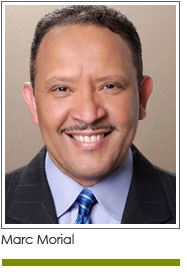 "When districts with prisons receive enhanced representation, every other district in the state without a prison sees its votes diluted. And this vote dilution is even larger in the districts with the highest incarceration rates. Thus, the communities that bear the most direct costs of crime are therefore the communities that are the biggest victims of prison-based gerrymandering. The Census Bureau’s decision to count incarcerated people in the wrong place interferes with equal representation in virtually every state.” – Prison Policy Initiative, The Prison Gerrymandering Project
"When districts with prisons receive enhanced representation, every other district in the state without a prison sees its votes diluted. And this vote dilution is even larger in the districts with the highest incarceration rates. Thus, the communities that bear the most direct costs of crime are therefore the communities that are the biggest victims of prison-based gerrymandering. The Census Bureau’s decision to count incarcerated people in the wrong place interferes with equal representation in virtually every state.” – Prison Policy Initiative, The Prison Gerrymandering ProjectThe Census is one of the most powerful tools the African American community has to claim our rightful voice in the political, legislative and social institutions of our nation.
Unfortunately, it also is one of the most abused.
One of the ways the Census is abused is prison gerrymandering. Our mass incarceration crisis has thrust 2.3 million Americans into correctional facilities – nearly one in 100. Black people are incarcerated at five times the rate of whites, so more than half of the incarcerated are Black, most from urban communities. Most of these prisons are located in overwhelmingly white, rural communities. And when it comes to the Census, Black, urban Americans who are incarcerated – and who can’t vote -- are counted as residents of those white rural communities rather than the diverse urban communities where they live.
Hundreds of prison communities around the country counties have a 10-to-1 ratio of racial over-representation— in other words, the portion of the prison that is Black – and can’t vote -- is at least 10 times larger than the Black portion of the surrounding county.
This siphoning of Black urban political power into white, rural communities is the modern-day version of the Three-Fifths Compromise, and violates the principle of One Person, One Vote.
Some states are rejecting this relic of the racist past, and I’m pleased to congratulate New Jersey for becoming the latest to reject prison gerrymandering. Governor Phil Murphy this week signed a bill requiring incarcerated persons to be counted in their home districts when legislative boundaries are redrawn. Congratulations also to the bill’s co-sponsors, Senators Sandra Cunningham and Nilsa Cruz-Perez and Assembly members Shavonda Sumter, Raj Mukherji, and Annette Quijano.
According to the Newark Star-Ledger, more New Jersey inmates come from Essex than any other county, but most of the state’s correctional facilities are located in counties to the south. That meant more than 1,600 Camden residents were counted as residents of other counties.
The problem is even worse in other states. According to the Prison Gerrymandering Project, 60% of Illinois' prisoners are from Cook County (Chicago), yet 99% of them are counted outside the county. In Texas, one rural district’s population is almost 12% prisoners. Eighty-eight residents from that district, then, are represented in the State House as if they were 100 residents from urban Houston or Dallas.
New Jersey is the 7th state to end prison gerrymandering – the other states are New York, California, Maryland, Delaware, Nevada, and Washington. More than one in four Americans now live in a jurisdiction that has ended prison gerrymandering.
State action, while vitally important, won’t solve the problem at the federal level, or affect the unfair allocation of federal resources that results from unfair Census practices, but it is a step closer to the ideal of One Person, One Vote.
Every state should follow the New Jersey’s lead and end prison gerrymandering to ensure equal representation for every American.
Marc Morial is the president and CEO of the National Urban League.












